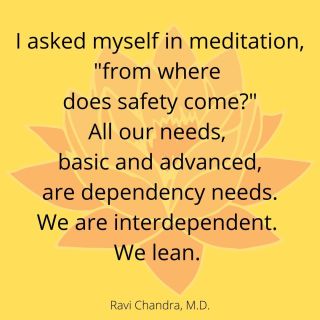Anxiety
12 Tools to Help Cope With Catastrophic Anxiety and Worry
Your inner voice can derail or guide you. But you have to learn how to listen.
Posted February 16, 2023 Reviewed by Vanessa Lancaster
Key points
- The possibility of violence in this society can trigger catastrophic fears and outrage.
- We must actively counter tendencies to hold on to negative information by cultivating wisdom and compassionately relating to our inner lives.
- Strategies to cultivate insight into catastrophic fear include recognizing thought chains, mindful self-compassion, and accepting uncertainty.

Anxiety was the most common mental health issue even before the pandemic, and anxiety and panic reached record highs over the last few years. I can’t even count the number of times that I’ve had to talk to patients (and myself) about catastrophic fears.
I’ve taken to calling it “the amygdala pitching plots.” And sometimes we have a whole (neurotic, paranoid, Sci-Fi, or horror) Netflix series going on that makes Walter Mitty seem grounded by comparison.
The amygdala is the center of our survival-oriented fight-or-flight responses, which most often kick into high gear when our loved ones or we are threatened or when we feel our principles or values are threatened. It enlists our “super sensitive neural network” created by our life voyage of vulnerabilities, self-concept, and traumas, to produce our perceptions of the moment.
Evolutionarily, our survival response was triggered when we were in physical danger–like how our ancestors might have needed to escape a lion on the prowl in the savanna. Nowadays, many of us might get wigged out when we fear others’ opinions of us are negative, and we face potential rejection, judgment, or even ostracism.
Catastrophic fears and outrage can be triggered by the possibilities of violence in this society, particularly if you’re a vulnerable or marginalized group member. On top of this, our brains were built for survival, not happiness (or even clarity or wisdom). We often have “Velcro minds” for negative information, meanings, and thought spirals and “Teflon minds” for positive data. We must actively counter these tendencies by cultivating wisdom and compassionately relating to our inner lives.
A definition of wisdom is maintaining reason in the face of uncertainty, anxiety, and intense emotions, and these days, we need all the tools we can muster. We are all works-in-progress, and we all play important roles in comforting and helping each other on our journeys of individual and collective safety and wellness.
I don’t think anyone can fully deal with their “inner voice” completely within their heads because we are social beings. “Taming one’s mind” also involves working towards belonging, which involves understanding others as well as oneself.
As a psychiatrist and human being, I provide empathy, support, and validation for emotions, especially as they spring from the context of one’s particular identity and historical experience. Helping my patients cultivate insight into the processes of their minds is also an important aspect of the therapeutic process. Thus, through therapy, we work on our lives' emotional, cognitive, relational, and cultural dimensions, including catastrophic fears and anxiety. Very often, these tools can help:
- Recognizing thought chains. Typically, the amygdala pitches a series of negative thoughts that end in catastrophe. This is a thought chain that slopes ever downwards. It’s important to recognize that we can “stay with” the neutral observation or emotion and even construct a positive thought chain from it. Our interpretation of our inner life and experiences creates meaning, and as mentioned above, our Velcro minds tend to reinforce negative possibilities. We can actively cultivate balance and even positivity.
- “Double tabling.” Sometimes, a catastrophic fear is a remote possibility. We can help ourselves by brainstorming other possibilities to give ourselves some cognitive flexibility and evaluate likely outcomes. Put all the possibilities on the table, and talk yourself down to reality.
- Mindfulness. We can develop the capacity to note, be with, and be curious about our mental processes, so we don’t jump from emotion or uncertainty into a story, judgment, or criticism. Noting and soothing physical signs of distress is also important. Mindfulness is a component of
- Mindful self-compassion (MSC). MSC consists of mindfulness, common humanity, and self-kindness and can be learned experientially through workbooks or workshops. Over 1600 research trials back its benefits for cultivating positive mental and physical health and self-worth, as well as decreasing anxiety, depression, and stress. One of the several dozen tools promoted by MSC is soothing touch. Putting a hand over your heart, caressing your cheek, or giving yourself a hug can be grounding and comforting. The three-part MSC break or mantra is another technique to be with difficult emotions: “This is a moment of suffering. Suffering is a part of life. In this moment of suffering, may I at least be kind to me.”
- Emotional distancing. In his book, Ethan Kross details this and other methods of dealing with “chatter,” what he calls the ruminative, destructive, even catastrophic quality of the inner life. I found this technique particularly intriguing. Apparently, talking about oneself in the third person (for example, I might say to myself silently or aloud, “Ravi is experiencing anxiety”) or adopting a fly-on-the-wall or neutral (even compassionate) perspective and describing the situation to yourself really helps tune down rumination and stress. I highly recommend Chatter as a quick and helpful read.
- Worry sessions, combined with divide-and-conquer strategizing. Give yourself 20-30 minutes or so a day to worry. If worries come up outside that time, jot them down and tell yourself you’ll use your worry session to think about them. You can also problem-solve or talk yourself through the possibilities during this time.
- Accept uncertainty as a part of life. This is a hard one and really requires not just accepting uncertainty but grounding oneself in presence and relatedness and savoring and being grateful for one’s positive experience.
- Recognize impermanence. “This too shall pass” is, ironically, timeless wisdom. Change is the only constant. Very often, catastrophic, all-or-nothing fear takes up all our mental space, and we need to find ways to put boundaries on it.
- Find the signal in the noise. Anxiety and even catastrophic fears connect us to the reality of suffering and our own vulnerability and precarity in the world. They give us important information and can raise red flags about issues of importance, such as our safety or belonging in the world or our fears of being exposed to interpersonal aggressions.
 Source: By Ravi Chandra
Source: By Ravi ChandraRecognizing the message is vital in developing compassion for ourselves and others and working towards a better world. More and more of us are experiencing catastrophic fears, such as the consequences of climate change on the survival of humanity and other species of life on Earth. How can we comfort ourselves, generate insight, and motivate ourselves to action? I think we have to hear our fears first and then companion ourselves and each other as we work towards better outcomes.
- As mentioned above, empathy, support, and validation for our emotional lives are essential, as well as developing awareness, insight, and compassion for the processes of our individual minds in the context of our personal and cultural histories.
- Developing and feeding a sense of humor about one's inner life and the absurdity of the world can go a long way in mitigating our worst fears and helping us just be with it all.
- Finally, of course, medications, supplements, alternative medicine, and mind/body practices for anxiety can be extremely valuable and even life-changing. Consult with your physician or psychiatrist.

I hope these tools and perspectives help you have a dialogue with the showrunner in your mind–and even become a more effective showrunner yourself, for a peaceful mind, life, and world. Remember, we’re all on journeys of identity, belonging, wellness, and meaning. Our inner lives can connect us to all of these.
(c) 2023 Ravi Chandra, M.D., D.F.A.P.A.
To find a therapist, visit the Psychology Today Therapy Directory.
References
Kross E. Chatter: The Voice in Our Heads, Why it Matters, and How to Harness it. Penguin RandomHouse, 2021.
Stossel S. My Age of Anxiety: Fear, Hope, Dread, and the Search for Peace of Mind. Penguin RandomHouse, 2014.
Waldman K. Can We Control the Voice in Our Head? (A review of Chatter) New Yorker, February 5, 2021.
Rabin RC. Worried? You’re Not Alone. New York Times Well Blog, May 9, 2016.
Chandra R. Getting out of the Anxiety Trap: Make it RAIN! Psychology Today, January 31, 2012
Neff K. Take the Self-Compassion Test
The Neff Germer Handbook of MIndful Self Compassion
Chandra R. SF Love Dojo lecture on Mindful Self-Compassion - on YouTube (2019)
Details for the Self-Compassion Break and Supportive Touch exercises can be found on Kristin Neff’s website
12 Common Cognitive Distortions, with commentary by Ravi Chandra


